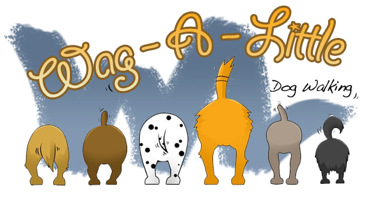Disaster Plan
If Disaster Strikes, Do You Have a Plan?
Be Prepared with a Disaster Plan
The best way to protect your family from the effects of a disaster is to have a disaster plan. As a pet owner, that plan must include your pets. Being prepared can save their lives. Different disasters require different responses. But whether the disaster is a hurricane or a hazardous spill, you may have to evacuate your home. In the event of a disaster, if you must evacuate, the most important thing you can do to protect your pets is to evacuate them, too. Leaving pets behind, even if you try to create a safe place for them, is likely to result in their loss, injury or death. So prepare now for the day when you and your pets may have to leave your home.
1. Have a Safe Place to Take Your Pets
Red Cross disaster shelters cannot accept pets because of state health and safety regulations and other considerations. Service animals that assist people with disabilities are the only animals allowed in Red Cross shelters. It may be difficult, if not impossible, to find shelter for your animals in the midst of a disaster. So plan ahead! Do not wait until disaster strikes to do your research.
2. Assemble a Portable Pet Disaster Supplies Kit
Whether you are away from home for a day or a week, you’ll need essential supplies. Keep items in an accessible place and store them in sturdy containers that can be carried easily. The following list contains some great suggestions.
Pet Disaster Supplies
Your plan of action for all of your pets should include, but not be limited to the following:
• Each pet should have its own kennel/crate with a photo on the crate. On the bottom or back of the photo, write the pet’s name, sex, and either your name and phone number(s). The pet carrier/crate should be large enough for the pet to stand up and turn around in.
• Each pet should have its own food/water dishes. Have their names written on the bottom of each bowl.
• Have a file on each pet containing health history and vaccination dates. Should you be required to take the pet to a shelter or animal-friendly hotel with you, this information will be required.
• Have a leash and collar with all pertinent information on the tags readily available. This will include pet’s name, rabies tag and contact phone number.
• Have an ample supply of food and medication for the pet with specific feeding and medication instructions written out in clear handwriting. If the pet tends to be anxiety ridden during storms or car travel, ask your veterinarian for a prescription of sedatives to carry in the pet's personal belongings bag.
• Remember that you can not predict Mother Nature. You may be evacuated much longer than you had originally thought. Pack enough supplies for an extended stay. If you don't need them, great! You can keep them on hand in case of another emergency situation.
• Locate the area evacuation shelters and pet-friendly hotels in and around your state. A great source of information on this is the Web site http://www.petswelcome.com. Call ahead and find out availability and make a reservation if needed. Most shelters operate on a first-come, first-served basis. Be one of the first to arrive and give the pets plenty of time to settle in while you are there with them. Remember, this is a new experience for them in a strange place with strange people and it may take a while until they become familiar with the smells, sights and sounds of their temporary home. Keep pets on leashes at all times.
• During or after a natural disaster, a pet's behavior can temporarily change. Packing a muzzle and harness is a good idea in case behavior becomes less than desirable for the place you are staying. The pets may be put into close contact with many new pets they do not know and they may have to be cared for by people they do not know.
• Pack your car with flashlights, batteries, trash bags, baby wipes, newspapers and paper towels in case the pets either get sick or go potty while in their crate.
• Learn as much as possible about hurricanes, tornadoes and floods. Familiarize yourself with your area FEMA staff. They can provide you with a wealth of information concerning the area you reside in and what to expect in various types of disasters and the area's evacuation plan.
• There is always the possibility that you and your pets may become separated during a disaster situation. Because of this you should familiarize yourself with the AKC Companion Animal Recovery Program (CAR). This program is dedicated to providing 24-hour recovery services for microchipped and tattooed pets that are enrolled in the CAR database. You can learn more about AKC’s CAR Program at www.akccar.org.
Planning for a disaster does not have to be a disastrous undertaking. Remember that a positive, proactive approach is the best plan to make sure everyone and every pet stays calm, cool and collected during an emotionally charged situation.
3. Know What to Do as a Disaster Approaches
Often, warnings are issued hours, even days, in advance. At the first hint of a disaster, act to protect your family and your pets. Planning and preparation will enable you to evacuate with your pets quickly and safely. But bear in mind that animals react differently under stress. Outside your home and car, keep dogs securely leashed. Transport cats in carriers. Don’t leave animals unattended anywhere they can run away. The most trustworthy pets may panic, hide and try to escape—or even bite and scratch. And when you return home, give your pets time to settle back into their routines. Consult with your veterinarian if any behavior problems persist.
To book an appointment or to learn more about our dog walking and pet sitting services, please email us or call us at (720) 515-3567.
Follow us on ...
Professional Dog Walking, Pet Sitting & Pet Taxi Services ...
Copyright 2023 Wag-A-Little: Dog Walkers & Pet Sitters. All rights reserved.




